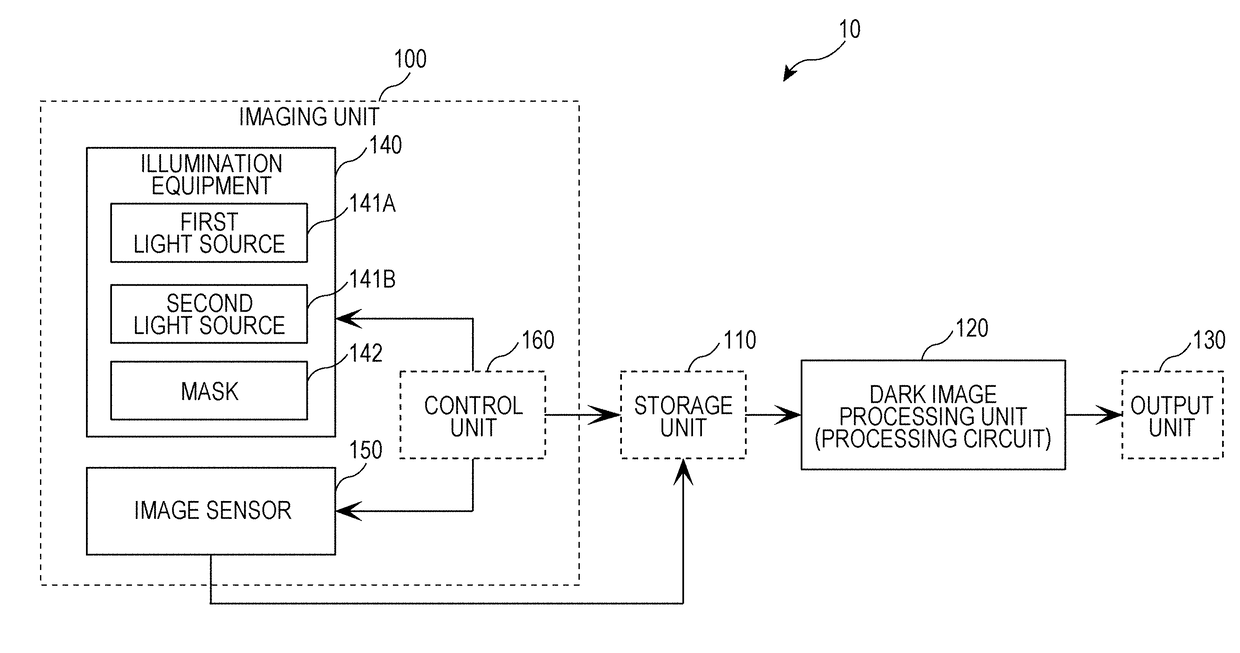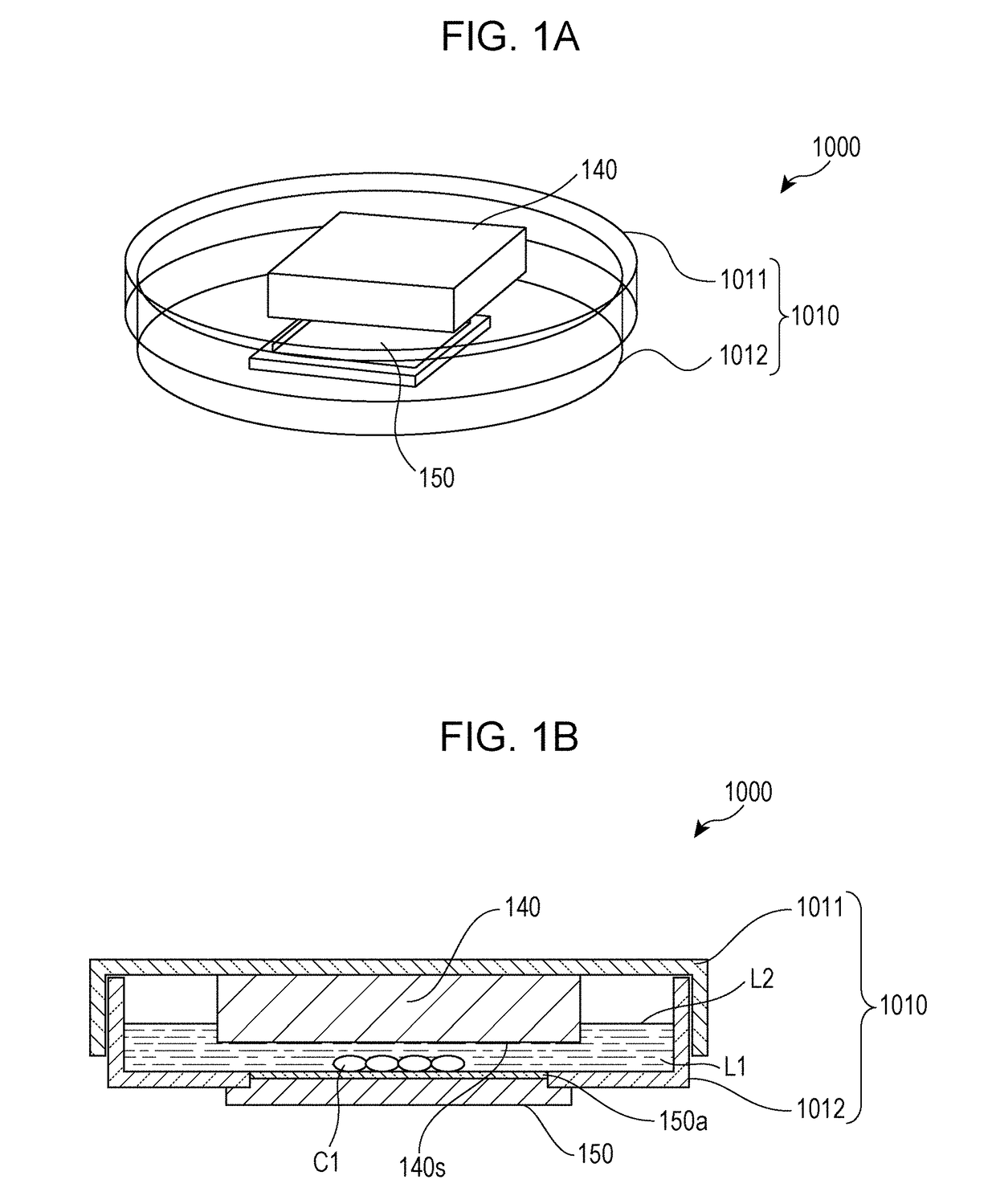Image generating apparatus and image generating method
- Summary
- Abstract
- Description
- Claims
- Application Information
AI Technical Summary
Benefits of technology
Problems solved by technology
Method used
Image
Examples
embodiment 1
[0072]An image generating apparatus according to Embodiment 1 is provided with: illumination equipment made up of multiple point light sources and a mask in which are created a light-transmitting part that transmits light and a light-blocking part that blocks light, such as stripes or a checker pattern; an image sensor; and a processing circuit. In the illumination equipment, the multiple point light sources at different positions successively illuminate an object (that is, a material) positioned on top of the image sensor. At this time, the image sensor images the object while light and dark patterns of the light reaching the image sensor and the object are switched. As a result, multiple images with different light and dark patterns are acquired. For each pixel of the image sensor, the processing circuit extracts the pixel of lowest brightness (the dark of the light and dark patterns) from among multiple images, and generates an image.
[0073]At this point, the image generating appa...
embodiment 2
[0154]In Embodiment 1, each pixel is imaged over a sequence of images that includes one or more periods of a bright segment and a dark segment, and for each pixel position, the minimum brightness value is decided from among the multiple images, and the brightness value of the pixel at that pixel position in the dark image is decided. In Embodiment 2, the arrangement of objects (for example, cells included in an embryo) is specified by analyzing the brightness distribution of the dark image generated by the dark image process of Embodiment 1. Hereinafter, Embodiment 2 will be described in detail.
[0155]FIG. 18 is a function block diagram of the image generating apparatus 10 according to Embodiment 2.
[0156]The image generating apparatus 10 according to Embodiment 2 is provided with all of the structural elements of the image generating apparatus 10 of Embodiment 1, and additionally is provided with a cell position specification unit 210. Note that the cell position specification unit 2...
embodiment 3
Modification of Embodiment 3
[0221]In the present modification, the abnormal cell detection unit 220 stores a predetermined determination value as brightness determination criteria.
[0222]FIG. 32 is a function block diagram illustrating a detailed configuration of the abnormal cell detection unit 220 according to the modification of Embodiment 3. As illustrated in FIG. 32, the abnormal cell detection unit 220 according to the present modification is provided with all of the structural elements of the abnormal cell detection unit 220 of Embodiment 3 above, and in addition, is provided with a determination criteria storage unit 225.
[0223]The determination criteria storage unit 225 stores a predetermined brightness determination value (for example, 1300).
[0224]In the case in which the average brightness value of a cell region falls below the determination value, for example, the abnormality determination unit 224 judges that the cell corresponding to the cell region is abnormal.
[0225]FIG...
PUM
 Login to View More
Login to View More Abstract
Description
Claims
Application Information
 Login to View More
Login to View More - R&D
- Intellectual Property
- Life Sciences
- Materials
- Tech Scout
- Unparalleled Data Quality
- Higher Quality Content
- 60% Fewer Hallucinations
Browse by: Latest US Patents, China's latest patents, Technical Efficacy Thesaurus, Application Domain, Technology Topic, Popular Technical Reports.
© 2025 PatSnap. All rights reserved.Legal|Privacy policy|Modern Slavery Act Transparency Statement|Sitemap|About US| Contact US: help@patsnap.com



